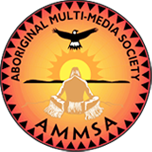Article Origin
Volume
Issue
Year
Page 12
Sharing stories, the words of Fox Morin and Ken Ward, are perhaps the most effective way to let First Nations people know that it can happen to them.
"This is my life. Do you want it to be yours? Sometimes you just need to go with your own stories," said Denise Lambert, program designer with the Kimamow Atoskanow Foundation, out of Sandy Beach, in northern Alberta. Lambert was one of nearly 300 who took part in southern Alberta's first Aboriginal Conference on HIV/AIDS, Hepatitis C and Harm Reduction, in Lethbridge Feb. 27 and 28.
Morin and Ward were two of the speakers who shared their stories. Morin, who had a liver transplant because of Hepatitis C, and Ward, who 12 years ago was diagnosed with HIV, talked about how wrong choices and risky behaviours led them to where they are today.
Morin related that when he received his diagnosis, he wasn't angry at contracting the disease.
"This is something I did myself. I can't blame anyone else. I knew immediately it was from my own doing," said Morin.
HIV and Hepatitis C are two diseases that are disproportionately showing up in the First Nations population.
Dr. Paul Hasselback, chief medical officer with the Chinook Health Region, which includes the Blood and Peigan Nations, said statistics indicate that younger Aboriginal people tend to test positive at a higher rate than non-Aboriginals the same age and that First Nations' women are presenting more with the diseases than their male counterparts. The latter statistic, hypothesized Hasselback, is more the fact that Aboriginal men are not getting tested for these illnesses.
Hepatitis C is 10 times more common than HIV. Both diseases can be spread through the sharing of needles for intravenous drugs and HIV can also be spread through unsafe sex.
There is a reticence in the Aboriginal population to talking about the diseases.
"The issue isn't really addressed in southern Alberta a lot," said conference co-ordinator Ellie Beebe. "There's a lack of understanding and a lack of awareness."
Lambert travels around the province with the Kimamow Atoskanow Foundation, focusing on the care and support of people living with HIV.
"It's at an epidemic level," said Lambert.
Neither HIV nor Hepatitis C is easy to talk about. They both can involve admitting to unfortunate personal lifestyle choices, which are sensitive issues.
These may be risky behaviours such as drug and alcohol abuse, unprotected sex, perhaps with a number of partners, and even poor parenting skills.
The message of discouraging people from using drugs and alcohol and practicing monogamy changes depending on the target group, said Lambert.
"I think in the Aboriginal community, I think what really impacts people is, 'This is me. I'm going to share myself with you. You take my story for what will help you'," she said. "We need more than just a sterile piece of information."
Lambert has been with the foundation since 1990, and in that time she has seen communication lines begin to open.
"There's been a lot of inroads made," she said. "The comfort level (of talking about these diseases) has improved a little bit."
Conferences like this one, said Lambert, provide opportunities to network and get new ideas.
"I'm here to support the partnership and observe new trends," she said.
For Morin, a conference like this is what makes having contracted Hepatitis C bearable.
"I talk about (my life on skidrow) not to glorify, but in hopes that some young kid hearing my story will change their life, especially if they're already on drugs and alcohol."
"Just the fact that we can talk together and not worry about region and jurisdictions is to be recognized and commended," said Hasselback.
The conference was the joint effort of four partners: the Lethbridge HIV Connection, the Sik-Ooh-Kotoki Friendship Society, Peigan Health Services and the Blood Tribe Department of Health.
- 1199 views
